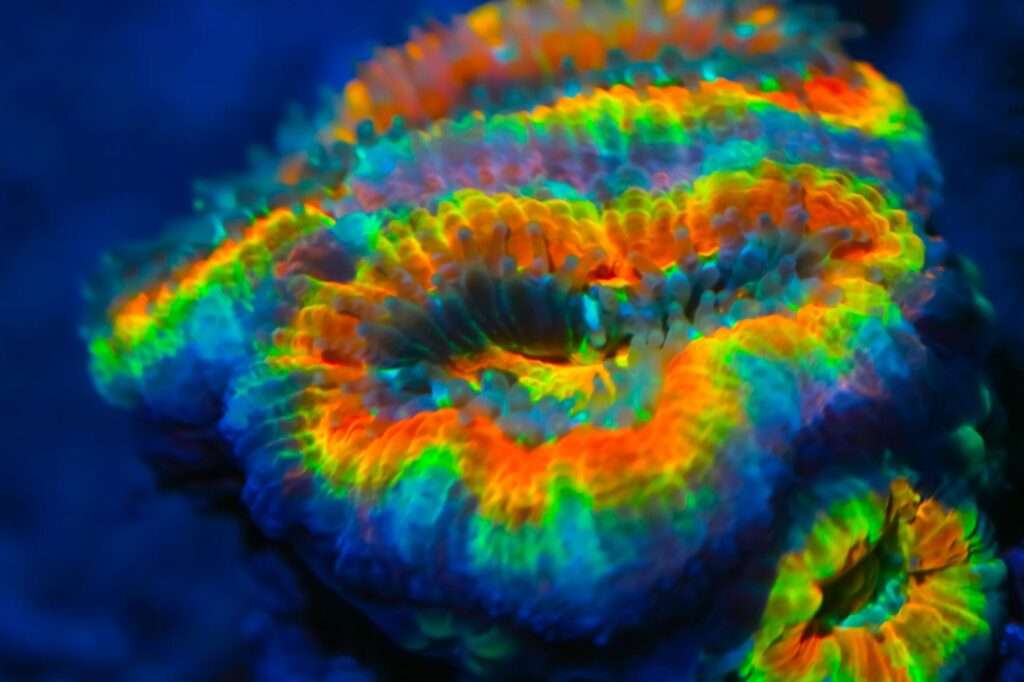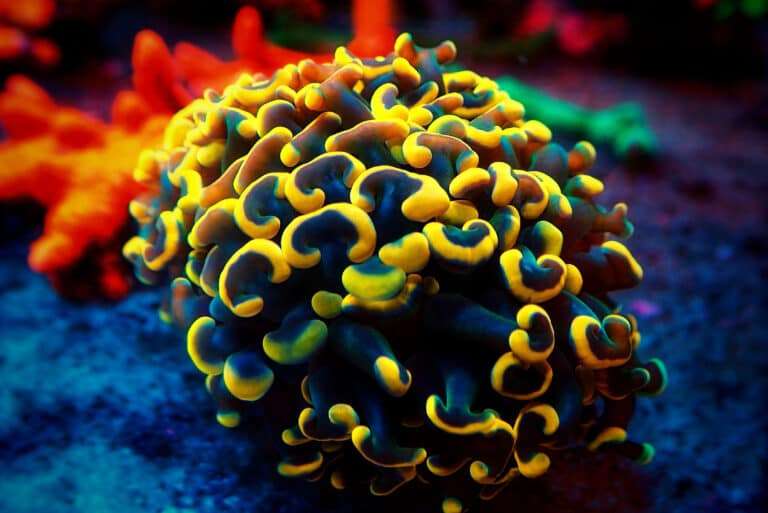
One of the two popular Blastomussa corals is the stunning Pineapple Coral, or Blastomussa merleti. The other is its member, the Blasto Coral Blastomussa wellsi, which is much more vibrant. However, of the two, B. merleti is regarded as being the simpler to maintain.
The Pineapple Coral is the only species in the world with these hues. Typically, the outside region is brown to dark red, with green cores. Exciting new aquacultured specimens have centres that range in color from deep green to golden green and come in tones of pink, maroon, and various shades of green.
Habitat
Wells first described the Blastomussa genus in 1961. There are three real kinds of coral, according to author Vernon’s book “Corals of Australia and the Indo-Pacific.” However, only two species—Blastomussa merleti and Blastomussa wellsi—are currently recognised as existing. From Madagascar to New Caledonia, they can be found. The Blastomussa merleti inhabit murky waters at depths of 0 to 131 feet on lower reef slopes (0 – 40 m). They spread their tentacles at night to feed.
Morphology
B. merleti’s skeletal system has a common base from which branches rise in a “dome” shape. Similar to the pipe coral, it has individual polyps that, when extended, give the coral its solid appearance. This organism is known as the Pipe Blastomussa. Once the polyps shrink, a clear skeletal structure made up of individual branches is seen. These corallite stalks have a diameter of slightly over 7 mm, however the polyps can range in size from 1 to 2″. These thin, easily broken branches all originate from the same central root. A large number of divers have recently cut off what they require while leaving the mother colony intact. Unknown is the lifespan. The colors of this species are distinct in nature. Typically, the outside region is brown to dark red, with green cores. Pinks, maroons, and different shades of green, with centres ranging from bright green to deep green, are some of the color variations that result from propagation.
In Captivity

- Feeding
The Blastomussa genus has evolved a number of feeding techniques. They get some of their nutrients from a marine alga called zooxanthellae through a symbiotic interaction. They can also take in dissolved organic substances and planktonic creatures as well as food particles from the water column. Zooplankton, cyclopeeze, mysis, and other very minute minced shrimp or fish are fed to B. merleti in captivity, and it thrives on them. They can grow more quickly if you feed them multiple times every week.
- Social Interactions and Compatibility
Other corals are aggressively attacked by the Blastomussa genus. The B. merleti will tolerate other corals of the same species, but they must be kept well apart from them. The skeleton structure of Blastomussa corals makes them suitable for concealing from predators and coexisting in the wild with a variety of creatures. It is discovered among a variety of mollusks, sponges, and sessile invertebrates.
Table





